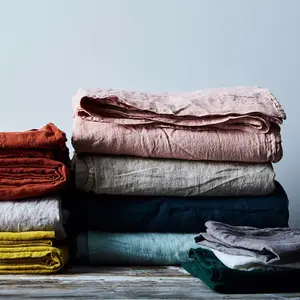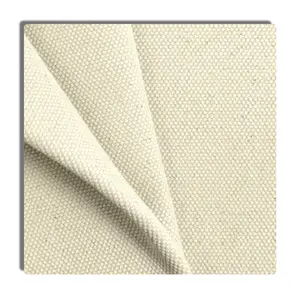Thick fabric, often known as heavyweight fabric, refers to textile materials that are heavier, thicker, and more durable than lighter fabrics. These textiles are often rigid and resilient, with a higher degree of insulation, making them suited for colder locations or things requiring more outstanding durability. Heavy fabrics provide a world of possibilities for both beginner and experienced sewers. Each variety has distinct features, ranging from denim and canvas to brocade and velvet, making them ideal for various projects.
Types of thick fabric
Fabrics come in a variety of styles. A thick wool fabric has a ribbed surface, a twill weave, or a basket weave and is available in various weights. Canvas is a tightly woven fabric with a rigidity/stiffness that makes it appropriate for multiple uses, such as upholstery, bag making, and building awnings. Thick canvas fabric is sturdy, long-lasting, and widely used for bags, shoes, tents, and upholstery. Sewing thick canvas fabric requires a heavy-duty machine and a heavy or denim needle. Heavy felt fabric is a non-woven fabric created from fur, synthetic fibers, or wool fabric. Felt is utilized in various crafts, garments, and industrial purposes. It can be sewn by hand or machine using a universal needle.
Thick velvet fabric has a plush, soft feel and is generally constructed from cotton, synthetic fibers, or silk fabric. Velvet is commonly used in evening attire, furniture, and drapery. Thick vinyl fabric is a tough, flexible plastic fabric widely used for upholstery, bags, jackets, and other products. Because of its thickness, vinyl can be challenging to sew. Thus, a machine with a roller foot, a walking foot, a Teflon foot, and a leather needle is advised. Thick polyester fabric has a fuzzy surface and is thick. It is warm and insulating because of the softness of its surface. It is used to produce winter coats and outdoor clothing.
Thick corduroy is typically made of cotton or a cotton-poly combination. They often feature a cross-grain structure with tiny ridges that run their length. The channels that run alongside the ridges are known as "wales." Different kinds of corduroy fabric are grouped based on the wales on them, such as wide wale and micro wale corduroy. Corduroy fabric is famous for manufacturing pants, jackets, bags, pillows, and upholstery. Kids' clothing is one application for it specifically.
How to sew thick fabric
Some fabric types may appear thick and stiff due to the added starch to them, yet this stiffness is deceptive. After a few washes, it will wash away. Fabrics should always be pre-washed. Sewing thick fabric can be difficult, particularly when the sewing machine declines to move forward when the fabric is under the needle. A walking foot is handy in these cases, especially when stitching more than two layers of these thick fabrics.
Another suggestion is to use these thick fabrics to sew patterns with few little elements and to avoid sewing thin corners/tubes with them. To prevent the bulky seam phenomenon, it's a good idea to grade/trim/clip the seam allowances everywhere when sewing seams. In some cases, sewers may need to pound the seams (when there are cross seams) with a rubber mallet to get the fabric to cooperate. Furthermore, sewing these thick, heavy fabrics with a thick/denim needle and clips rather than pins to keep the fabric layers together is practical.







































 浙公网安备 33010002000092号
浙公网安备 33010002000092号 浙B2-20120091-4
浙B2-20120091-4